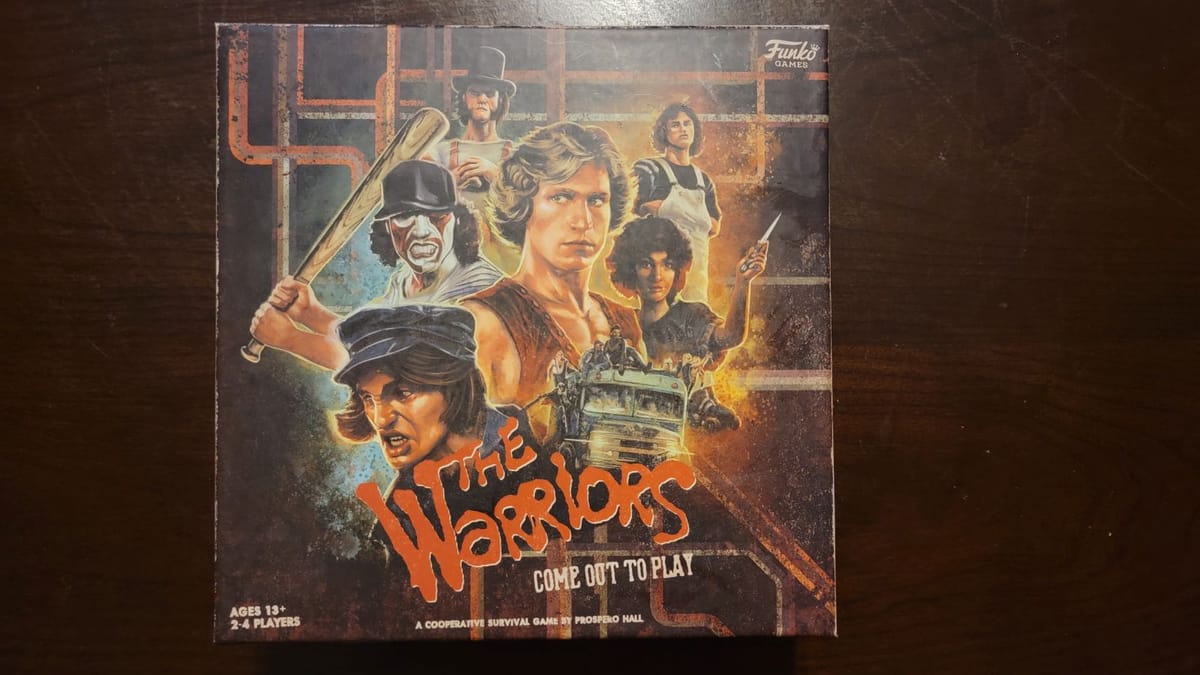
Cult-classic 1979 film The Warriors has a rabid following which has only grown in the years since its initial release, having ensnared itself into pop culture in a variety of ways, including a video game and now in board game form. But how does The Warriors, a gritty action film, translate to the board? Relatively well, although gameplay instructions can be slightly confusing and neither of the two game phases are as fleshed out as they could be. Despite this, The Warriors: Come Out to Play does manage to be quite fun once players become comfortable with the gameplay mechanics.
The Warriors: Come Out to Play is a cooperative board game which allows two to four players to relive the events of the film, running from the initial assassination in Van Cortlandt Park to Coney Island. Gameplay takes place in two distinct phases, the Fight Phase and the City Phase, which alternates continually as players race their way across the various districts until they face their ultimate showdown on Coney Island. Each phase features a distinct method of play and helps prevent the game from growing too repetitive. The Fight Phase involves players doing just that – fighting the other gangs, while the City Phase has players running across the board collecting new cards and weapons and facing threats. But before I dive into these modes, let me first explain the setup.
The Warriors: Come Out to Play consists of a game board, 7 gang leader figures, 56 War cards, 24 Bopper cards, 20 Weapon cards, 5 dice, 5 fight tokens, 21 X tokens, 3 bottle tokens, 8 Warrior movers, 6 gang tiles, 14 location tiles, an Instigator token, and a Coney Island Showdown tile.
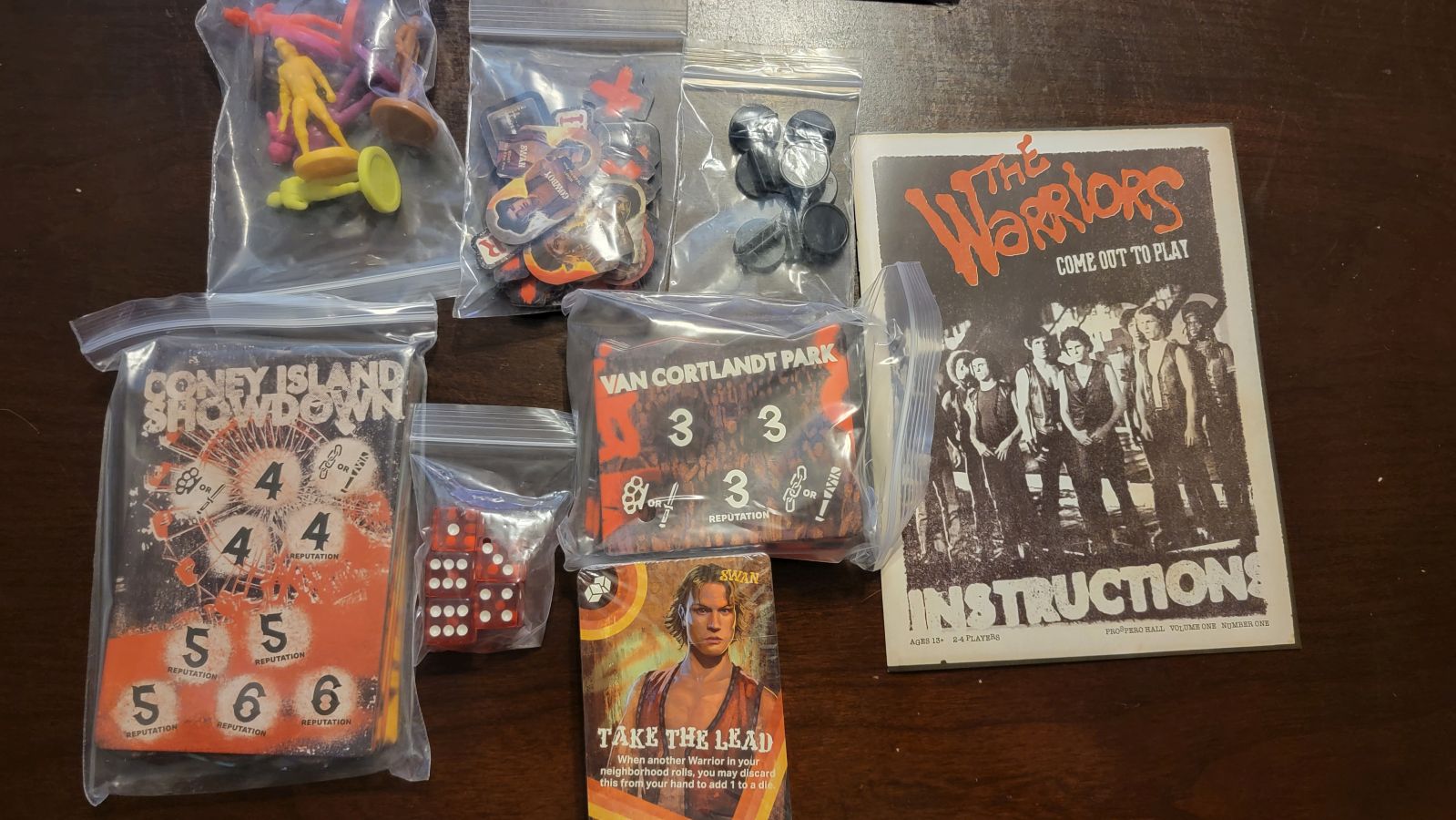
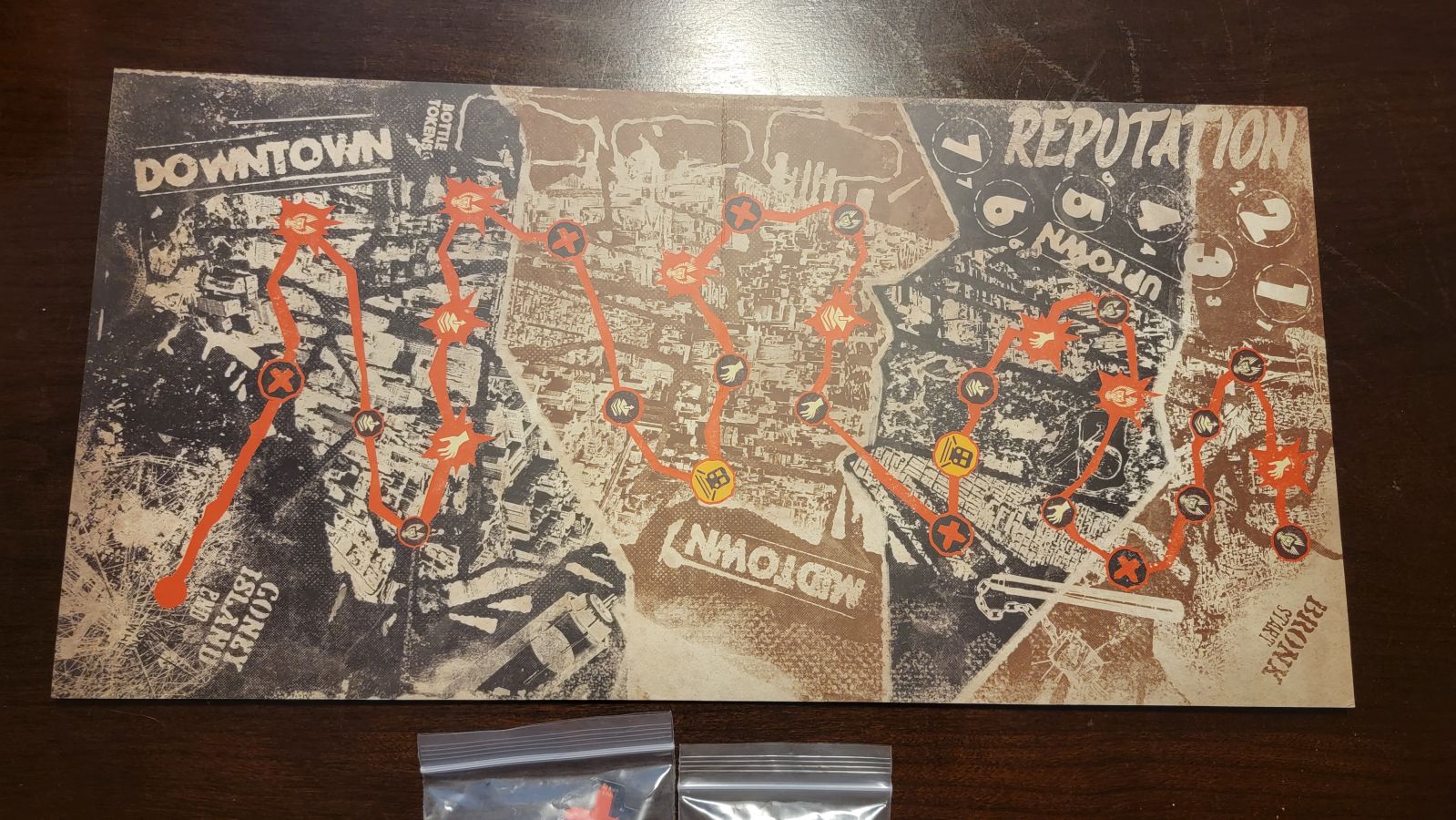
Setup begins by laying out the detailed game board, which depicts the city and is divided into playable sections leading from Van Cortlandt to Coney Island, each with its own gang boss fight. You then place the five dice and tokens to the side of the board, ensuring that they are accessible to all players. Next, you place The Warriors gang leader figure in the 4th spot on the Reputation Track and the rest of the gang leader figures are randomly placed on the Reputation Track in the other six spots. Players then choose a Warrior mover, each of which depicts a character from the movie, to serve as their player token which they will move across the board. After choosing their Warrior mover, they pull out the four War cards depicting that character along with three Throw Hands cards, which are part of the War card deck. All remaining War cards are shuffled together and laid face down near the board. Three War cards from the top of the deck are flipped face up and left visible to all players. The five fight tokens are then placed on the board where the X fight symbols are displayed.
Players then collect their weapon. This is completed by drawing the Weapon card which matches your character’s starting War cards. The remaining Weapon cards are then shuffled and placed face down in a deck near the board and three Weapon cards are then flipped face up and laid out next to the board visible to all players. The Bopper cards are then shuffled and placed face down beside the board, remaining a secret until drawn by a player. The game begins with the initial fight in Van Cortlandt Park and ends with the Coney Island Showdown, so players will set these two location tiles aside for the moment and then shuffle the remaining Location tiles and place the stack face down near the board. Players then mix up the Gang tiles and place them in a face-down stack near the Location tiles. The top Gang tile is then revealed. This will be your first fight. You must now match up the revealed Gang tile with the Van Cortlandt Park tile to determine the criteria you will need to complete to win the fight. Now, randomly choose a player to be the first to move and hand them the Instigator token.
Play can now begin. The goal of the game is to survive the night, making it from Van Cortlandt Park to Coney Island, winning or fleeing fights along the way. It is possible to lose the game if your reputation falls too far, providing a constant threat of failure which helps to provide tension to the proceedings. To win a fight you must satisfy multiple requirements listed on the Gang and Location tiles, while also playing by the rules that the Gang tile specifies, which may prevent the use of specific cards or limit the number of Dice which can be rolled.
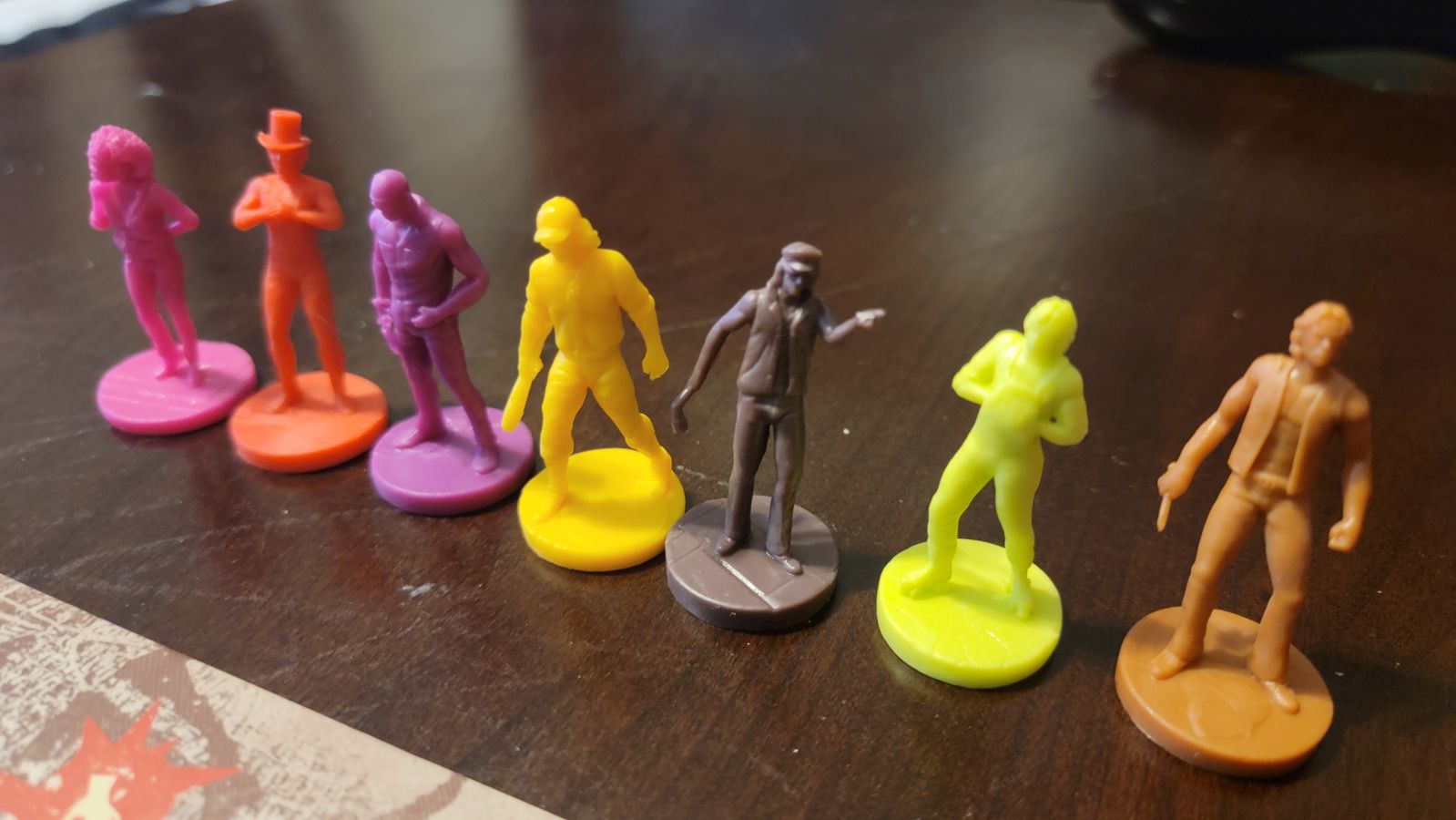
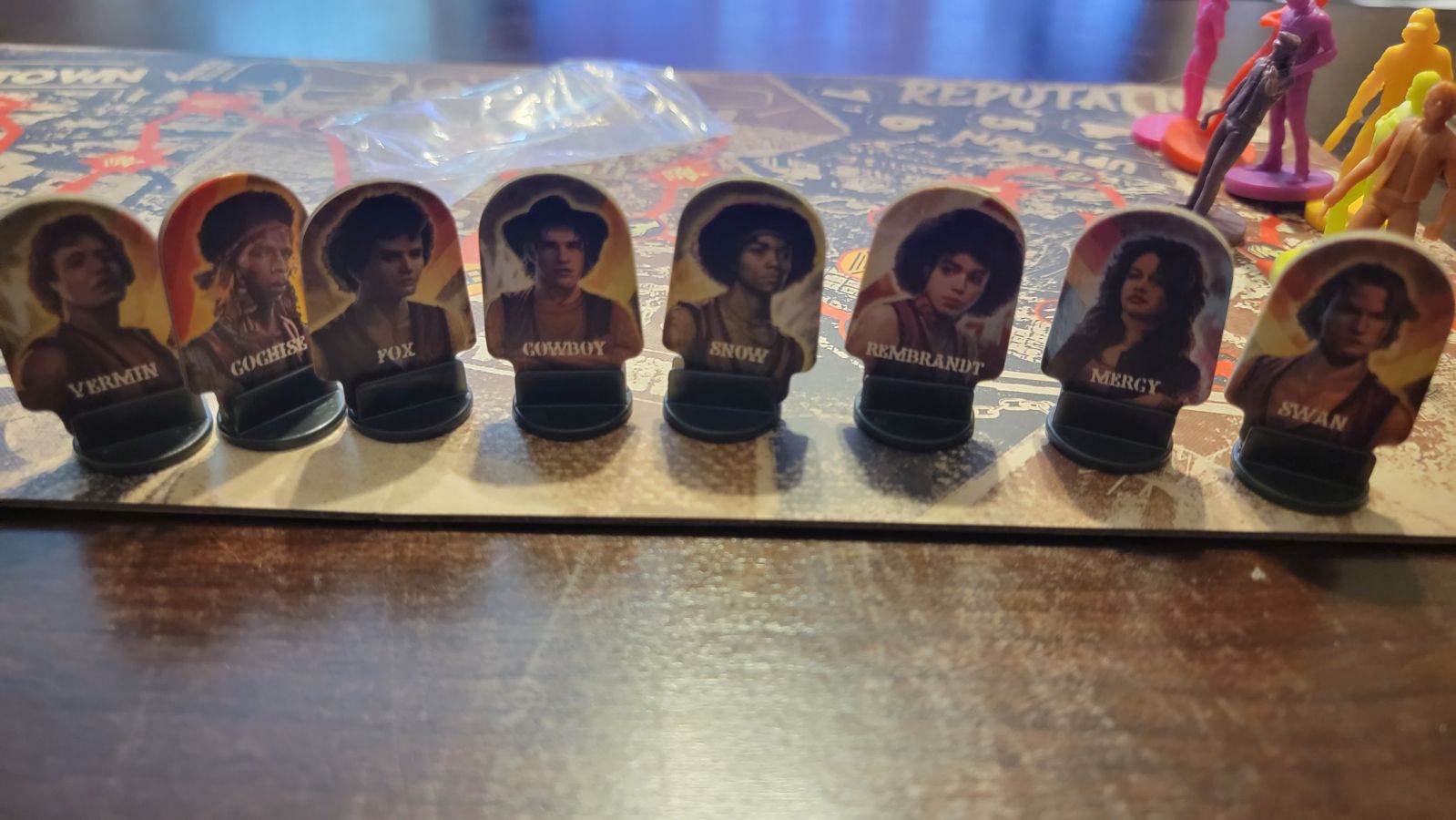
Each Gang tile always has two required actions. To satisfy the requirements of the Gang tile, you must use your War cards to accomplish specific actions, which will require the use of a specific weapon and to roll a specific number. Additionally, Location tiles can provide up to five additional fight requirements to fulfill, depending on the number of players in the game. Your cards serve multiple functions and once used, they must be discarded until you rest or land on a spot during the City Phase which allows you to add a card back to your deck. Some card actions, when used, require you to remove the card from the game completely. Due to this, each choice becomes a give and take, forcing you to manage your cards and determine when losing a card for good is necessary, or how many cards are worth playing in a fight when you know that you may not have time to regain those cards before the next fight. It is a constant back and forth, requiring that players work cooperatively to win.
Card actions include rolling one or two dice, specified by a dice symbol in the top left or using a weapon to unlock a War card’s special ability which may provide extra dice rolls or allow the player to substitute their current weapon for another. Additionally, cards may allow a player to add one number to another player’s dice roll or to their own, to regain a card from their discard pile. As previously mentioned, most cards provide specific bonuses but using them may require sacrifice. Thankfully these bonuses do not have to be triggered if they are not needed. A player can play as many cards in a turn as they want but cannot roll more than five dice in one turn and cannot complete more than one fight requirement in a turn.
To complete a fight requirement, you must either roll the number listed on the Gang or Location tile, or use the weapon required. You can only use your weapons once per turn, so you must be careful when and how you use them. While the two Gang tile requirements must always be completed, on the Location tile you only have to complete requirements equal to the number of players, along with one additional requirement if that Gang currently has a higher reputation than The Warriors. So, if two players are playing and the gang they are fighting has a higher reputation, then to win the fight you must complete a total of five requirements: two on the Gang tile and three on the Location tile. If at any point you fail to meet a requirement during a turn or you run out of cards to play, then that player is knocked out of the fight and cannot participate in the rest of the fight. If a fight is lost by all players then you must move The Warriors down a level on the Reputation Track and move the gang that won up. Likewise, if you win the fight, then you will move the gang that lost to the seventh space, the lowest number on the Reputation Track, and move The Warriors up one spot while rearranging the other gangs as needed. If at any point The Warriors end up at number seven on the Reputation Track, then the game is over and The Warriors fail.
The other option allowed during a fight, aside from during the initial fight and the final fight, is to flee. As you progress across the board you will trigger additional fights. Whoever lands on the fight token is considered the Instigator and will secretly look at the next Location tile and its requirements and determine whether to fight or flee. If you flee then you must move The Warriors down one spot on the Reputation Track and place a Beer Token in the appropriate spot on the board. If you flee a second time in the game, then you must move The Warriors down two spots on the Reputation Track, and so on. You can only flee three times per game, and only if you do not drop below a reputation level of seven.
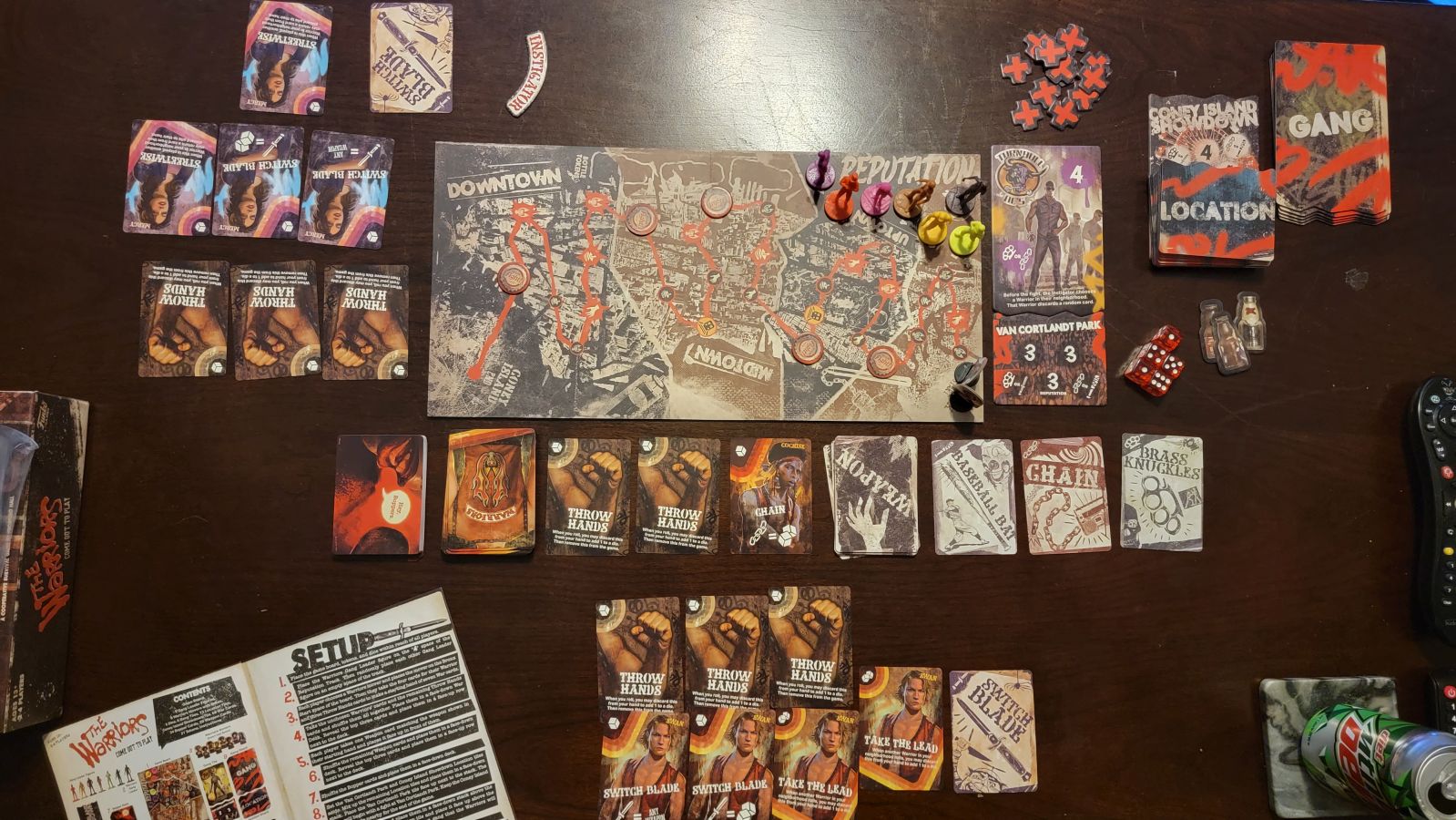
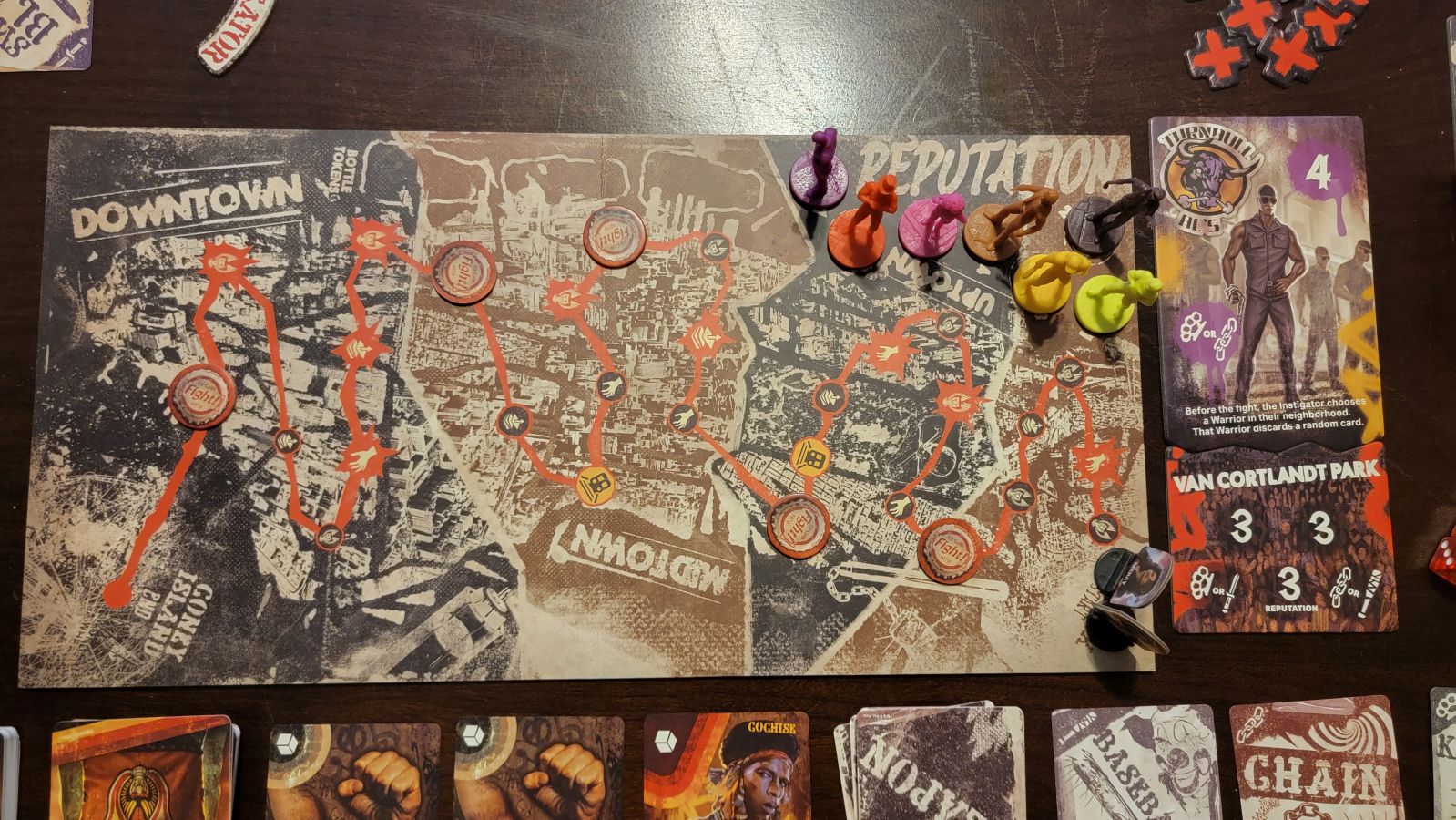
In-between fights all players will participate in the City Phase, which has you moving to any space in your current city section. You can move one space or jump ahead multiple spaces, or even head straight to the next fight. Each space allows a player to perform specific actions, such as add a discarded card back to their deck, choose an additional War card or Weapon card, hop on the train, or rest and recover all their cards. Resting allows you to recover your entire deck of discarded cards, minus one card, which must be removed from the game permanently. Each action you take also requires you to draw one or two Bopper cards, depending on the symbol surrounding the space. Bopper cards function as threats and eventually lead to additional fights or require you to complete specific criteria, like rolling a specific number with the dice, in hopes of avoiding a fight. Some Bopper cards say “Coast is Clear” and these can be discarded into a pile when drawn, but all other cards must be played. The first two Bopper cards drawn can be ignored, but when a third is drawn the player must do what is stated on the card. These Bopper cards create a sense of tension during the City Phases as you work to regain your cards, acquire new cards, and hopefully avoid more fights than necessary to survive the night.
If you survive long enough you will make it to Coney Island for the final showdown. This fight has its own Location tile which has different requirements and is based on your current Reputation level. Not only must you complete the two Gang tile requirements and the requirements determined by the number of players, but you must then also complete a requirement for each gang that is higher than you on the Reputation Track. The last fight can be brutal, especially if you have not had sufficient time to regain cards or stumbled into more fights than expected due to Bopper cards, but there is a sense of accomplishment that comes from surviving and winning the game.
I had a great time with The Warriors: Come Out to Play but I do feel as if the game as a whole is half-baked. The City Phase passes by so quickly that it is hard to replenish your cards or gain new cards, and the constant threat that Bopper cards represent makes players more apt to rush to the next fight, as often the tradeoff for gaining a new card or resting ends up causing players to have to participate in an additional fight, leading to players being depleted of their best cards when they reach the next mandatory fight. You could argue that this is by design, but this caused more frustration during my playthroughs than fun. While none of the players had an issue with the mandatory fights, the Bopper cards almost always prevented players from being able to do much of anything during the City Phases. I feel as if this could be alleviated if more spaces served as Bopper free spaces, or if the max Bopper cards that could be pulled per space is one instead of two, allowing for a bit more freedom of choice.
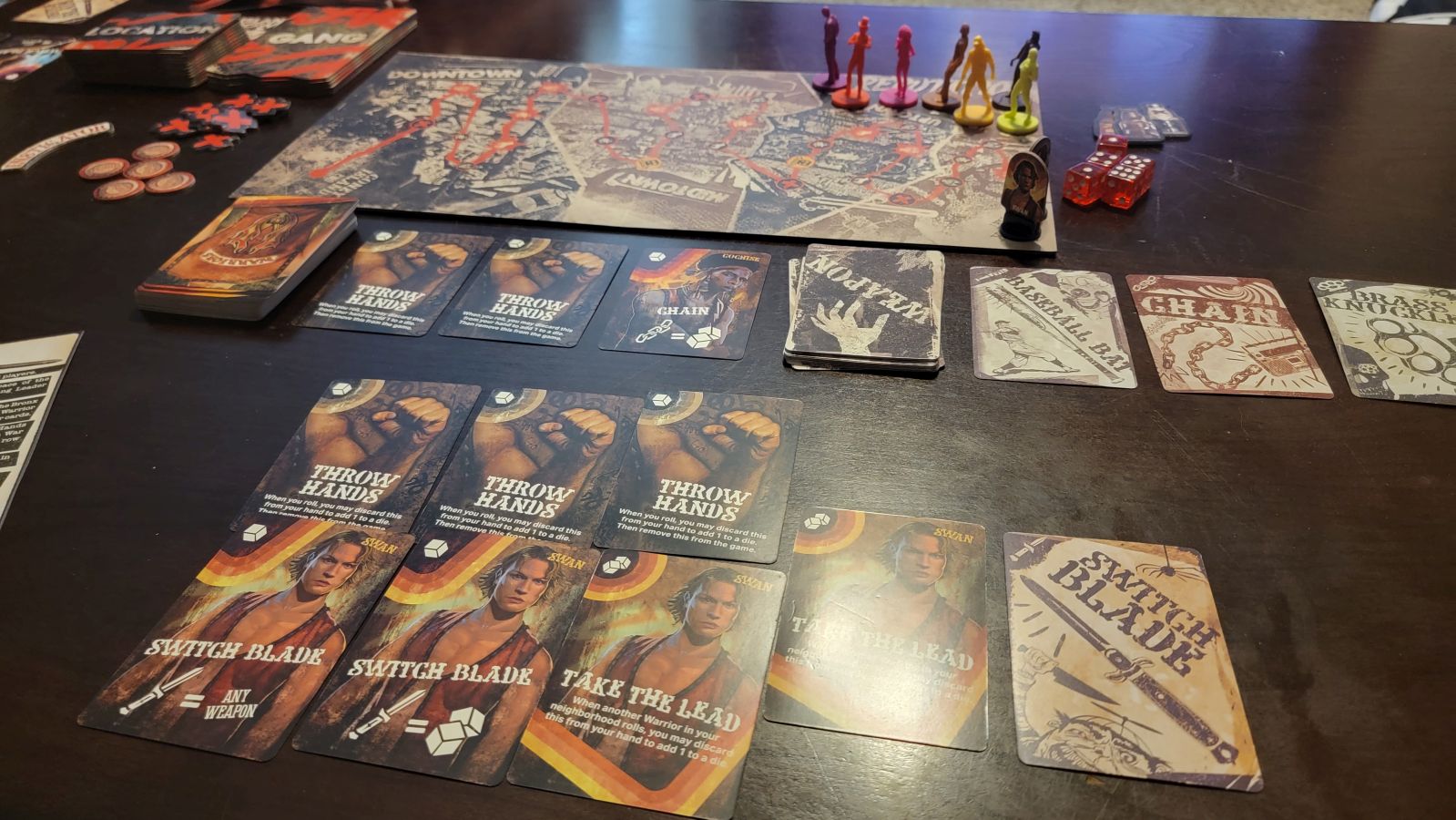
Likewise, the fights become repetitive as you must accomplish the same goals repeatedly, normally reusing the same cards. While fights can be stressful and exciting at first, they tend to lose their impact the more fights you participate in. Don’t get me wrong, there is still a great sense of accomplishment to winning the game and knowing that it is possible to lose creates a great sense of tension, but it’s a shame that the fights leading up to the showdown deflate much of the excitement for the final showdown. While the showdown does have harder to complete challenges, it would have benefited by throwing a curve ball and mixing in unexpected fight conditions.
That said, I do appreciate the core concept of the game, especially the inclusion of both a Fight and City Phase, but I just wish more thought had gone into making a more in-depth game, rather than a game that seems as if it wants to be more but is constrained by needing to be completed in a half hour to an hour. Still, the game’s overall aesthetic is fantastic and the board, game cards, and gang figures are all well-made and detailed and as a whole, The Warriors: Come Out to Play is great fun for a few playthroughs with friends and well worth checking out.
The Warriors: Come Out to Play
Good
The Warriors: Come Out to Play is a fun game, albeit one hampered by actively punishing players for attempting to build up their War deck in-between fights. Whether this is intended to stack the odds against the player or not, it hurts the game mainly due to pushing many players to not take chances and instead rush through to the final fight. Still, the game’s aesthetic is great, the core gameplay loop is fun, and the dual phase concept is unique. For fans of the film, The Warriors: Come Out to Play is worth checking out, but the game may not stand up to multiple playthroughs.
Pros
- Great use of The Warriors license
- Unique concept featuring two phases with different play styles
Cons
- Neither the Fight or City phases are fleshed out enough
- The cost to build your deck is often too high, forcing players to rush to the end rather than experiment with different cards
